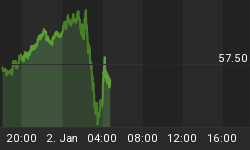As an investor, I want to bet on the jockeys who win the most races, not just the best-looking horses. So, while I'm no Tom Peters or Stephen Covey, I've made a study of success over the last decade. The critical question for a metals investor: what does it takes to be a serially successful mine-finder?
Before I give you the answer, let me give you a little context on just how difficult this is. It's not as simple as looking for a needle in a haystack; it's more like looking for a needle in a vast field of steel haystacks, each one of which will give your metal detector false positives. And it's very expensive to drill holes into them, which is the only way you can test for a needle's hidden presence.
The odds of any given anomaly actually indicating the presence of a mineable needle are something like one in 300. It typically takes about 10 years to get the needle out of the haystack, and commodity price fluctuations can turn cash-cow operations into money bleeders in the blink of an eye. Pricked by the fickle needle of fate.
So, why would anyone invest in such an uncertain business? Because the world simply cannot function without metals, and the rewards for those who deliver them can be spectacular. Doubling or tripling one's investment on a successful mineral discovery is routine, and 1000% gains (10-baggers) are common enough that resource speculators have strategies for bagging them. It's rare, but 50 and even 100 times one's initial investment do happen in this volatile sector.
This is why it's so vital to find and back the most successful jockeys, riding the very best horses-all the more so when you consider that most geologists never make a commercial discovery in their entire careers.
So much for theory. In practice, it's easy for people to claim to have made discoveries, and many do, but their contributions (geological insight, prioritizing drill targets, etc.) are hard to quantify and verify. Solution: focus on those rare few whose names keep popping up in discoveries that actually become profitable mines.
To this end, we created the Explorers' League, a mine-finders's hall of fame that documents the most serially successful needle-locators in the world. Check it out; on our Explorers' League page, you can not only see what these people have done, you can see what they are up to now. It's a great place to start, and once you're familiar with what our league honorees are like, you'll know what to look for whenever you consider investing in a mineral exploration company.

Louis James and legendary Explorers' League mine-finder Andy Wallace kicking rocks and looking for gold in Nevada.
I promised to tell you the "secret," however, so I will boil down all I've learned from kicking rocks all over the world over the last ten years with these explorers.
Explorers' League honorees are, without exception, very bright and driven individuals, to be sure, but that's a given. They are also logically and technically inclined; geologists are scientists, after all, and the good ones are up to speed on all the latest developments in their field, ready to deploy them in deciphering mysteries buried under mountains of stone. (The very best ones are making these developments; you can find them presenting findings at geological societies and in papers or books.)
However, these people are also highly intuitive; they have that rare ability to correctly connect fewer dots than most. It's widely agreed that there is as much "art" as science to finding economic metals deposits. That may sound metaphorical, but given the need to visualize what's happening deep inside bedrock that has been moved, tilted, eroded, sheared, melted, bent. Well, it's no stretch at all to see the importance of such a brain's artistic attributes. I often joke that if you tie a geologist's hands, you render him or her mute, because they can't seem to say anything without doodling on scraps of paper, napkins, or even using stock in first-anything to show you what they are thinking.
Saving the best for last, I have to say that the strongest common thread among the most successful mineral explorers in the world is their application of boot leather to solving problems. That sounds primitive, but what I mean is that the best technology can only give you a theory; you have to get out there, rock hammer in hand, and hike the land in question, comparing what you actually see in the rocks beneath your boots to what the imagery and modeling predicts. You don't find mines sitting in an office.
When I go on a due-diligence trip to see a project I'm considering investing in, I love it when the geologist is so passionate, I almost have to drag him or her off the rocks before I miss my plane. They just can't help themselves; they are so intent in figuring out the mystery, they can't stop hammering on the rocks, looking for the next clue.
In contrast, if the geologist doesn't even carry a rock hammer, chances are that he or she lacks what it takes, and I'm not going to invest.
This comes close to being the secret of my own success. The Casey Research Explorers' League was my own starting point for my own network in the industry. That network has grown over the years, giving me an edge in finding and evaluating the very best speculative investments in the resource sector today, some of which have the potential to go truly vertical. 10-baggers in the making. To find out more about the potential in these investments, please watch our free video, Going Vertical.
The article The Secret of Success in Mineral Exploration was originally published at caseyresearch.com
















